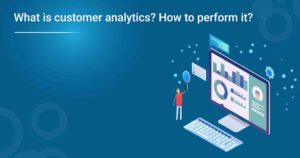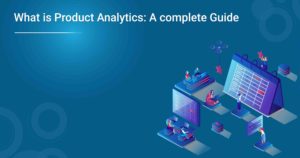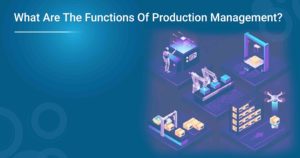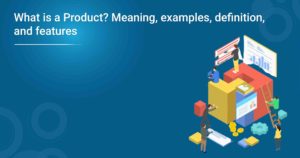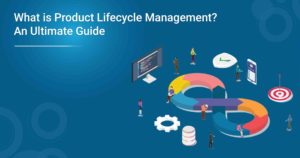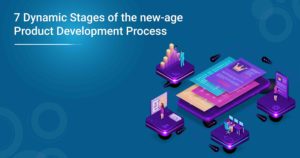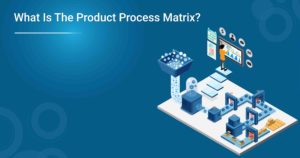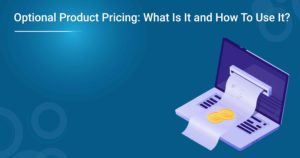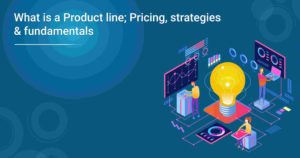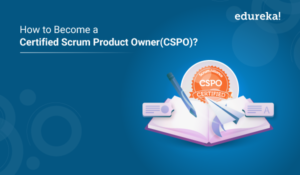Captive product pricing is a pricing strategy in which a company sells a good or service below its marginal cost to increase market share or gain other competitive advantages. The practice is also known as “predatory pricing.”
Captive product pricing is controversial and has been the subject of antitrust lawsuits. Some argue that the practice is anti-competitive and harms consumers by preventing them from obtaining the best prices for goods and services. Others argue that captive product pricing can benefit consumers by providing them with lower-priced alternatives to more expensive products.
There is no clear consensus on whether CPP is legal or illegal under antitrust law. The U.S. Supreme Court has not catered to the issue directly but has issued several rulings that suggest that the practice may be permissible under certain circumstances.
Benefits Of Captive Product Pricing
- Captive product pricing can help to increase sales of products that are complementary to one another.
- It can also stimulate demand for a product that may have lagged in sales.
- Additionally, captive product pricing can encourage customers to buy multiple products from a company, increasing overall profits.
- This type of pricing can also help to promote new products or product lines that a company wishes to push.
- Another advantage of captive product pricing is that it allows companies to manage inventory levels and turnover rates better.
- Additionally, this pricing strategy can help reduce the likelihood of price wars breaking out between competing firms.
- Moreover, captive product pricing can create loyalty among customers by making it more difficult for them to switch to rival brands or products.
- This type of pricing strategy can also help companies keep tabs on their competition and better understand what prices they are charging for similar products.
- Finally, captive product pricing strategies can help businesses plan for the future by providing insight into customer buying habits and trends.
Factors To Consider In CPP
When setting the price for a captive product, there are several factors to consider. The most crucial factor is the cost of production. This includes the cost of raw materials, labour, and overhead. You must consider the demand for the product in the market. If there is high demand, you can charge a higher price. But if demand is low, you’ll need to lower your price to attract buyers. Other factors include shipping and handling costs, taxes, and tariffs. You’ll also need to ensure that your price is competitive with other products on the market.
Real-World Examples of Captive Product Pricing
- Airline tickets are a typical example of CPP. Airlines are often seen charging different prices for the same flight based on factors such as when the ticket is purchased and what type of ticket it is (e.g. economy, business, first class).
- Another example of captive product pricing is mobile phone plans. Many mobile phone providers offer different plans with different price points depending on how many minutes, texts, and data are included.
- Hotels often use captive product pricing to sell rooms at different rates depending on the season or demand. For example, a hotel room that normally costs $100 per night may cost $150 during peak season or if there is a special event in town.
- Rental cars are another common example of captive product pricing. Car rental companies often have different rates for weekends, weekdays, holidays, and other times when demand is high.
- Finally, many amusement parks use CPP to charge different prices for rides and attractions depending on the time of day or week. For example, some amusement parks may charge more for rides during peak hours or at weekends.
Also Read: Steps To Create A Successful Go-To-Market Strategy
What is The Process of Captive Product Pricing?
There are numerous steps in the process of captive product pricing. The first is to understand the needs and wants of the customer. This can be done through surveys, interviews, focus groups, and other research methods. Once the company understands what the customer wants, they need to set a price that will cover the cost of production while still leaving room for profit.
This price must also be competitive with other products on the market. The next step is creating a marketing strategy to promote the product and convince customers to purchase it. This may involve advertising, discounts, or other promotional tactics. Finally, the company must monitor sales and adjust prices to ensure profitability.
There are a few key steps in the process of captive product pricing:
- Establishing a clear understanding of the company’s cost structure and desired profit margins. This is typically done through a thorough analysis of the company’s financials, including its cost of goods sold (COGS), overhead costs, and desired profit margins.
- Identifying the company’s core products or services that generate the most profit. These are typically referred to as “captive” products or services because they provide profitability that allows the company to subsidize other less profitable areas of its business.
- Develop pricing strategies for each captive product or service based on understanding customer demand and willingness to pay. For example, if customers are highly price sensitive, a lower price may be necessary to capture market share. On the other hand, if customers are less price sensitive, a higher price may be possible to maximize profits.
- Implementing the chosen pricing strategy across all channels where the captive product or service is sold, like an online, retail store, etc. This ensures that all customers are charged a similar price for the same product or service regardless of how they purchase it.
- Monitoring sales and profitability levels regularly to ensure that the chosen pricing strategy works as intended. This may involve adjusting prices up or down as necessary to maintain desired profit levels.
- Continuously evaluate the competitive landscape to ensure that the company’s pricing strategy remains effective. This may involve regularly changing the pricing strategy to watch out for changes in the market.
Pros And Cons of Captive Product Pricing
There are several reasons behind the companies’ engagement in captive product pricing. Sometimes it is done to keep a product line affordable for customers or to discourage competition. Other times, it may be done to help finance other aspects of the business. There are certain pros and cons of pricing strategy that should be considered before implementing it.
One advantage of captive product pricing is that it can keep products affordable for customers. This can help to increase sales and encourage loyalty among buyers. It can also help to discourage competition, as other companies may be less likely to enter the market if prices are already low. Another benefit is that it can generate additional revenue for the company, which can be used to finance other operations or investments.
Along with the advantages, there are a bunch of drawbacks to using captive product pricing:
- It may result in lower profits for the company than possible with a different pricing strategy.
- It may alienate some customers who feel overcharged for items they need.
- It could invite government scrutiny if regulators believe prices are being artificially manipulated.
Significance of Captive Product Pricing For Different Industries
Different industries have different reasons for using captive product pricing. For example, OEMs often use captive product pricing in the automotive industry to keep dealers from selling competing products. Insurers use captive product pricing in the insurance industry to keep customers from shopping around. And in the healthcare industry, providers use captive product pricing to keep patients from going to other providers.
Captive product pricing can be controversial but, at the same time very effective way to keep customers from switching to competitors. If you’re in an industry where captive product pricing is common, it’s vital to apprehend how it works and how it can impact your business.
SaaS Industry
There are several things to consider while setting captive product pricing for the SaaS industry. The first is what your products or services are worth to customers. This can be difficult to determine, but it’s important to consider because you need to ensure that you’re providing value that justifies your price. You’ll find attracting and retaining customers challenging if your prices are too high.
Another important thing to consider is the competition. What are other companies in your space charging for similar products or services? You must ensure that your prices are competitive so that customers see value in choosing your company over others.
Finally, think about how you want to structure your pricing model. There are various ways to do this; the right approach will depend on your specific business and goals. For example, some companies charge a flat monthly fee while others charge based on usage. Consider what would work best for your business and then craft a pricing strategy accordingly.
By keeping everything in mind, you can develop a pricing strategy for your SaaS company that meets customer needs and helps ensure long-term success for your business.
Healthcare Industry
The healthcare industry is particularly reliant on captive product pricing. This is because providers often have a monopoly on their services, allowing them to set prices without competition.
One of the challenges of captive product pricing in healthcare is that it can result in higher patient costs. This is because providers can charge according to their will for their services, and patients have little choice but to pay the price. This can be a problem for patients on a budget or with high-deductible health plans.
Another challenge of captive product pricing in healthcare is that it can incentivize providers to overuse certain services. For example, if a provider knows they can charge $100 for a service, they may be more likely to recommend it to patients, even if it’s unnecessary. This can drive up costs and create an unnecessary financial burden for patients.
Despite these challenges, captive product pricing is still standard in healthcare. Providers use it because it allows them to maximize revenue and maintain profitability. If you’re a patient, it’s essential to understand how your provider sets prices to make informed decisions about your care.
Food & Beverage Industry
There are several ways to price products for the food and beverage industry, but captive product pricing is one of the most popular methods. This involves setting a price for a product based on the cost of producing it, plus a markup for profits. The markup will vary depending on the specific industry and product, but it is typically around 30%.
There are several different ways that food and beverage companies can price their products for the captive market. One common approach is to use a cost-plus pricing strategy, where the company simply adds a markup to the costs incurred in producing the product. This markup will cover things like overhead costs, marketing expenses, and profits.
Another option is to base prices on what competitors are charging. This can be done by either matching or undercutting their prices. This strategy can effectively get customers to switch to your brand but can lead to a rush to the bottom on price and margins.
Finally, some companies choose to price their products based on customer-perceived value. This means looking at what people are willing to pay for similar products and then setting a price accordingly. However, this approach can be difficult to execute without extensive market research.
Also Read: What Is Product Planning And How Is It Done?
Apparel Industry
There are a variety of ways to price products in the apparel industry. One common method is captive product pricing, which involves setting a price for a product that considers the cost of manufacturing, shipping, and other associated costs. This method can be used to price both finished goods and raw materials.
The main advantage of CPP is that it allows companies to better control their margins. By taking into account all the costs associated with producing and shipping a product, companies can set prices that ensure they profit from each sale. This pricing method also provides greater transparency for consumers, as they can see exactly how much it costs to produce the item they are interested in purchasing.
There are some drawbacks to using captive product pricing, however. One challenge is that this method does not always consider market conditions or consumer demand changes. For example, if the cost of raw materials decreases but the selling price of the finished good remains unchanged, then the company’s margins will shrink. Additionally, companies may find it difficult to maintain their current prices without sacrificing profitability if consumer demand decreases or competition increases.
Overall, CPP is a popular choice for many businesses in the apparel industry. It provides control over margins and allows companies to track their costs better. However, it is essential to understand the potential challenges that this pricing method can pose.
What Are Different Types of Captive Product Pricing?
CPP is a pricing strategy wherein a company charges diverse price sets for the same products based on where it’s sold. For example, a company might charge $100 for a product in-store but $120 for the same product at a competitor’s store.
This type of pricing can be used to discourage customers from shopping around or to encourage them to buy from a specific retailer. It can also be used to keep dealers from selling competing products.
There are two main types of captive product pricing:
 List Price Discrimination
List Price Discrimination
With list price discrimination, a company charges different prices depending on who’s buying it. For example, a company might charge $100 for a product to retail customers but $80 for the same product to wholesale customers. This type of pricing is often used in the automotive industry to keep dealers from selling competing products.
Quantity Discounting
With quantity discounting, a company charges different prices depending on how much of it is bought. For example, a company might charge $100 for one unit of a product but $90 for two units. This type of pricing is often used in the insurance industry to keep customers from shopping around.
How To Understand CPP?
There are a few key things to understand about captive product pricing:
- It is setting prices for products only available through a single retailer.
- The goal is to generate higher profits for the retailer while still offering customers a fair price.
- To do this, retailers carefully consider the costs of producing and selling the product and its demand.
Captive product pricing can be controversial, as some argue that it takes advantage of customers with no other option but to buy the product from the retailer in question. However, it can be a win-win situation for retailers and consumers when done correctly.
Conclusion
Companies can increase their overall profits by charging an increased price for a product that is essential to the operation of another product. Captive product pricing is a standard pricing strategy companies use to increase profits. While captive product pricing can benefit the company, it is essential to remember that it can lead to increased consumer prices.
Product managers are always looking for ways to improve their product pricing strategies. One effective way is to take our Advanced Executive Certificate in Product Management course. In this course, you will learn about captive product pricing and how to use it to your advantage. You will also learn about other important topics, such as product development, marketing, and sales. This course is the perfect way to skyrocket your career to greater levels and become an expert in product management.
More Information:
Brand Management v/s Product Management: Know Key Differences
What Is The Product Process Matrix?






_1668670867.jpg)


